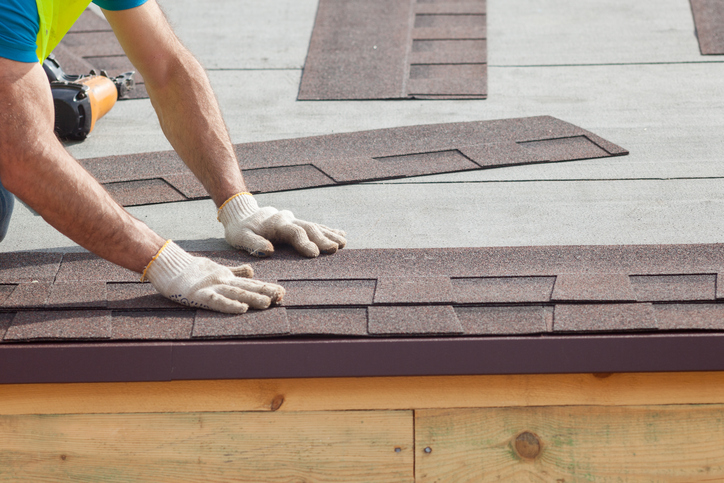Though it’s hardly the sexiest thing about your house, the roof is one of your home’s most important components. A well-built roof will withstand wind, weather, rain, and storms to keep your home dry and snug year-round. And, a well-chosen roof type for your home can enhance the appearance and value of your home.
This critical part of your home’s structure comes in many colors, styles, and types, all with advantages and disadvantages. Choosing the right roof type for your home is critical. Here’s what you need to know about the most common types.
Asphalt Shingles
Asphalt shingles are the most common type of roofing material in use in the U.S. They consist of a layer of fiber covered with a waterproof material (usually containing asphalt, which gives them their name) and aggregate material, which gives them their texture and appearance. They come in small, flat sections, making them easy to transport and install. They are best suited for sloped roofs.
Asphalt Shingle Pros: They are inexpensive and easy to install. They are lightweight and don’t require special substructures to support them. They come in many colors and styles, to mimic the look of more expensive options or to match the style of the home.
Asphalt Shingle Cons: They “shed” aggregate material over time, which can be an environmental hazard, and cause steady deterioration. They have a shorter lifespan and are easier to damage than other types. Some look cheap and detract from a home’s appearance, especially as they age.
Metal/Standing Seam
Metal/standing seam roofs have become quite popular in recent years. They usually consist of large sheets of corrugated or otherwise textured metal fastened to the roof joists. They come in many colors and metal types, including zinc, aluminum, steel, copper, and tin. There are also plastic and composite standing seam options. They are suitable for any type of sloped roof.
Metal/Standing Seam Pros: They are lightweight and offer extremely long life. They’re aesthetically pleasing when new, and come in a wide variety of colors and textures to match the look of the home. They can be heat-reflective, providing energy efficiency benefits in summer.
Metal/Standing Seam Cons: They’re expensive. Leaks can be very difficult to find and repair. Some types become unattractive as they fade.
Tile
Tile roofs are significantly less common than shingle and metal roofs and are easily recognized by the distinctive textured look they give the roof. Tiles may be made of a variety of materials including ceramic, slate, and metal, but the most common type today is cement. They are suitable only for sloped roofs.
Tile Pros: They can be extremely beautiful and add to the value of the home. They come in a wide variety of colors and textures. They last almost forever and are easy to repair. They provide good insulation.
Tile Cons: They are extremely expensive, both for materials and labor to install. Their heavy weight requires more roof support, which can also add to their cost. It can be difficult to find leaks, and they are brittle and prone to breakage. Walking on them requires care to avoid damage.
Membrane Roof
Very low slope and flat roofs require a different type of roofing than sloped roofs. Low-slope and flat roofs are very common in commercial property, but many homes also have portions of flat or very-low-slope roofs. When they do, those sections nearly always require a membrane roof.
Membrane Pros: The only common, suitable material for a low-slope or flat roof. Inexpensive to purchase and install.
Membrane Cons: Aesthetically unappealing. Can be hard to find and repair leaks.
Are you re-roofing an existing building this summer? We can help you assess your needs, select the right roof materials, and ensure your project is successful. Contact us today.



